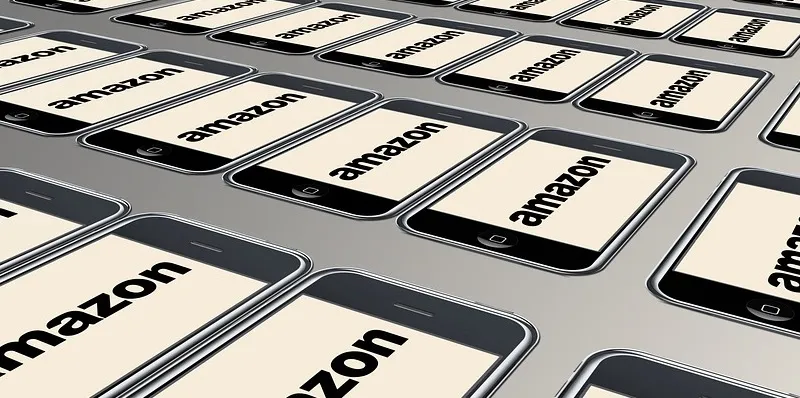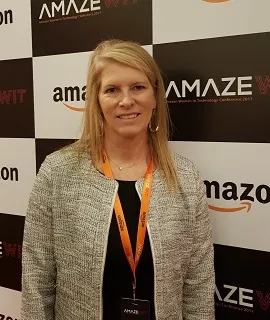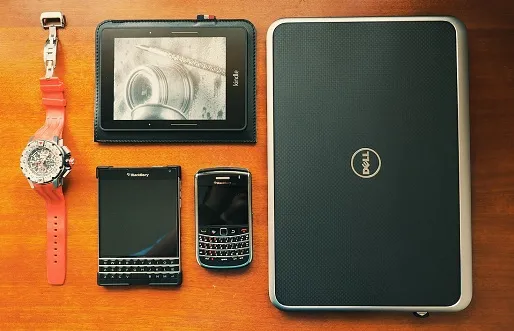Amazon’s US ReCommerce business holds a model for e-commerce players in India
Amazon believes its ReCommerce programme extends the useful life of products and creates closed loop product cycles to lower the cost of returns and the impact on the planet.

One of the biggest challenges e-commerce in India faces is returns. The industry average, in fact, is 25 percent - means extra cost in (reverse logistics) and lack of clarity in reconciliation for sellers.
E-commerce big daddy Amazon has been working on a solution to this problem for the last few years and seems to have succeeded. Amazon says its “ReCommerce” initiative in the US is a key component in the profitability and success of e-commerce.
By extending the useful life of products, WorldWide Returns and ReCommerce are reducing landfill waste and creating closed loop product cycles to lower the cost of returns and the impact on the planet. To enable reuse for as many products as possible, Amazon is encouraging its customers to buy, rent, and return.
YourStory spoke to Libby Johnson McKee, Director of Worldwide Returns and ReCommerce at Amazon, recently about the company’s strategies in the US, and gained some interesting insights.
How it began: Libby’s journey
The birth of Amazon’s ReCommerce business is entwined with Libby’s own journey. Seattle-based Libby joined Amazon in 1997 with the books category and stayed till 2001. Later, when her husband got a job overseas, they were on the move for 10 years. Libby started a non-profit in Spain to create awareness about the importance of clean marine water.
“Through that, I got interested in sustainability, which inspired me to do MBA in that in 2008,” she says.
Libby was back at Amazon in 2010, in charge of Kindle’s independent publishing platforms. But three years ago, she moved to a different profile, one where she could put to good use all the knowledge she had gained in sustainability.
ReCommerce started in the US three years ago as WDTIR – Warehouse Deals, Trade-In, Rentals.
Libby recollects, “When we get returns we usually repair, refurbish, reuse. But I wanted to give it a broader possibility and a different rental model to add value for the customer. So we rebranded it to ReCommerce.”
Under Libby, four different businesses started at Amazon: warehouse deal businesses, liquidations, trade-in, and rentals (mostly for textbooks).
In warehouse deals, returned items that can’t be sold as new will undergo a regime of repair, refurbish, and replacement of parts, along with changing the packaging, before being sold online – while throwing very little away. Liquidation is when sellers can directly buy returned products from Amazon at steep discounts. The last two models are available only in North America. In the trade-in model, you can trade a phone, laptop, or book, with an Amazon gift card that gives credit on Amazon (which you can spend on anything).
Evolving consumer behaviour

Amazon calls itself the most customer-obsessed company in the world. With advanced data analytics, the 23-year-old company understands how consumer behaviour is evolving across the world. For instance, they have found that millennials are interested in second-hand products and that there is now more awareness on what you buy and what to do with it when you are done with it– to use everything that can be used in creative ways.
Amazon is keen to exploit that opportunity.
Libby explains, “We think about end of life of products with sustainability in focus. It fits a broad spectrum of customers – not just low-income group and those who look only for deals. The smart shopper will take a laptop with a scratch for 20 percent discount.”
She adds that there is not a lot of difference in consumer behaviour in re-commerce across geographies. However, return policies at Amazon vary across countries. For example, in Germany you can return certain items on Amazon in up to two years; hence those items have an active rate of return. These rules are determined based on customer behaviour.
Libby says refurbish/second-hand clothing has become a really cool way to shop there.
Different processes
So how does the backend work differently for regular e-commerce and ReCommerce?
It is the reverse flow – much more goes out than comes back. Amazon manages the transportation to get the returned product back from the customer and also does grading on it.
Libby explains, “When a product comes back, we need to determine whether it can be reused. We have highly sophisticated Machine Learning for deciding what the next disposition of that product will be - whether it can be sold on warehouse deals, or if we should send it off to liquidation. Or we can do direct recycling; we try to destroy as little as possible (For hygienic reasons, you can’t resell some items).”
In two years, Libby claims these efforts have ensured that the volume of destroyed materials has come down by half. Their aim is to move towards zero waste.
“It’s not a business opportunity for Amazon but helping the planet and providing more opportunities for customers,” she adds.
Unlike in North America and Europe, where ReCommerce is active, Amazon follows a different model in India. Under a buyback programme, once the product comes back from the customer, sellers at the backend buy it from Amazon. They refurbish and re-sell (Amazon is just an enabler.) Sellers bid for the phones and the system picks up the highest bid price and shows it to the customer.
The India situation
It has been roughly two years since Amazon launched the refurbished category In India, although it entered the country four years ago. The Certified Refurbished store on Amazon India has smartphones, laptops, tablets and Amazon devices such as Kindle. They recently also added watches.

However, recycling, renting and trade-in options are not available in India yet.
According to Amazon India, products listed as “Certified Refurbished” have been inspected and graded to “Like New” condition.
“The products have no visible cosmetic imperfections when held 12 inches away. The products may be packaged in a generic box and will come with the accessories expected for a new product. It performs all the functions promised by the manufacturer at the time of sale and has all the standard accessories sold with the original product in working condition,” it says in its blog.
Certified Refurbished products on Amazon Renewed come with a minimum six-month limited warranty offered by the brand or product seller.
The refurbishment process typically includes a full diagnostic test, replacement of any defective parts, a thorough cleaning and inspection process, and repackaging by the seller or vendor.
Only select sellers that maintain a high quality and performance bar may offer Certified Refurbished products on Amazon Renewed. All products are backed by Amazon's return policies and carry a warranty card.
While Amazon India is busy building the category, its rival Flipkart has been surprisingly quiet on this front.
Flipkart was reported to be launching the sale of refurbished phones a few months ago, but the company has made no comments yet. According to earlier reports, the e-commerce giant was planning to sell refurbished phones with Flipkart certification and limited warranty.
Flipkart already claims to have 70 percent market share in mobile phones. Since they provide Buyback guarantee and product exchange, customers can easily return used phones, providing them the right setting for building the refurbished category. Additionally, P2P marketplace Ebay, which Flipkart acquired earlier this year, continues to function as an independent entity.
(According to estimates, about 5-8 percent of fresh handsets sold in India are returned.)
The other e-commerce unicorn, Gurgaon-based ShopClues, has been pushing this category strongly over the last few months.
“Re-New gadgets” is dedicated to refurbished and unboxed electronic devices, including laptops, smartphones and tablets, with sub-categories “Unboxed gadgets” (brand and expert certified) and “Refurbished gadgets” (expert certified). They have partnered with brands, including Xiaomi, OnePlus, Le, and Asus, for the same. ShopClues plans to grow this category to include a larger universe, ranging from TVs to watches and more and is aiming for 2 x GMV growths by October with a nine million customer target.
Also read: How ListUp aims to do what Ebay in India couldn't
The catch here is that millennials are more mobile: they prefer having less to move around and getting a new phone every six months is not a luxury when you have refurbished and pre-owned categories to fall back upon. However, it is essential to pay due diligence in the refurbishment process – right from removing the previous owners’ data, assessing the technical condition and warranty support etc. to ensuring that the customer is informed well before making the purchase.
Startups like ListUp, Cashify, OverCart, Rocking Deals and Green Dust, have been exploring opportunities in the sector, although trade-in and rentals are yet to make an entrance. More seasoned players like OLX and Quikr continue to assist P2P selling in addition to refurbished items. The recycling process (in which different parts are used for different purposes) is yet to be taken up by e-commerce platforms.
India currently has more than 30 million smartphone users. With the rampant growth of sharing economy, the potential of ReCommerce is sure to expand in India.







